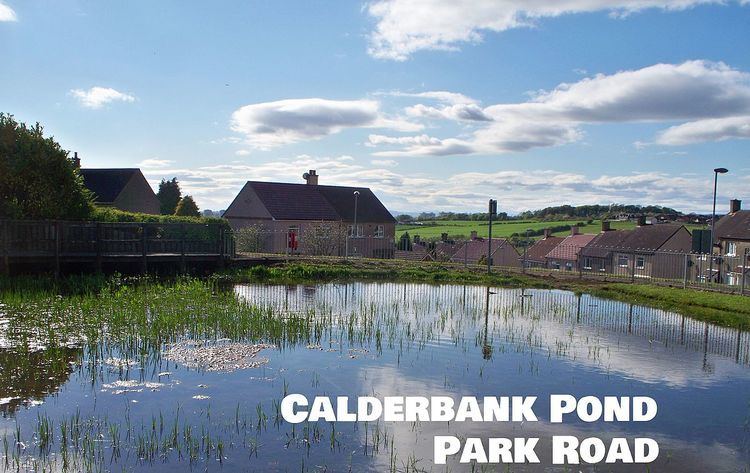Local time Monday 11:29 AM | ||
 | ||
Weather 8°C, Wind W at 10 km/h, 78% Humidity | ||
Calderbank is a village outside the town of Airdrie, North Lanarkshire, Scotland. The village lies 13 miles east of Glasgow city centre and around 34 miles west of Edinburgh. Other major towns include: Airdrie 2.5 miles, Coatbridge: 4 miles, Bellshill: 4 miles and Motherwell: 5 miles.
Contents
Map of Calderbank, Airdrie, UK
Etymology
The village's name is of a doubtful etymology. The first part of the name refers to the River Calder that flows through the village: however the second element is unknown. Some sources suggest the second element is from Old English benc "bench". A record of the name from 1182 as Celdrebec suggests this.
History
The village is famous for being the birthplace of the Vulcan, the world's first iron boat, which sailed from Calderbanks Iron Works to the River Clyde and plied the Scottish canals first with passengers and then with cargoes of iron and coal. Iron from the Calderbanks works was used to build the Queen Mary cruise liner. The Monkland Canal was extended to the west of the village in the late 18th century and was used as a route to transport coal to Port Dundas in Glasgow 12 miles away. This part of the canal has been preserved between the village and Sikeside on the outskirts of Coatbridge.And other parts of the canal can be seen in Coatbridge town centre and Drumpelier country park,however much of the canal was covered in the 1950s and 1960s by the M8 motorway which actually runs with the meanders of what was the canal (yet under the motorway large pipes still run water which feed the Forth and Clyde canal today).
Calderbank was the site of early Christian settlement, by monks from Newbattle Abbey in the Borders. This gave the local area the name of Monklands.
